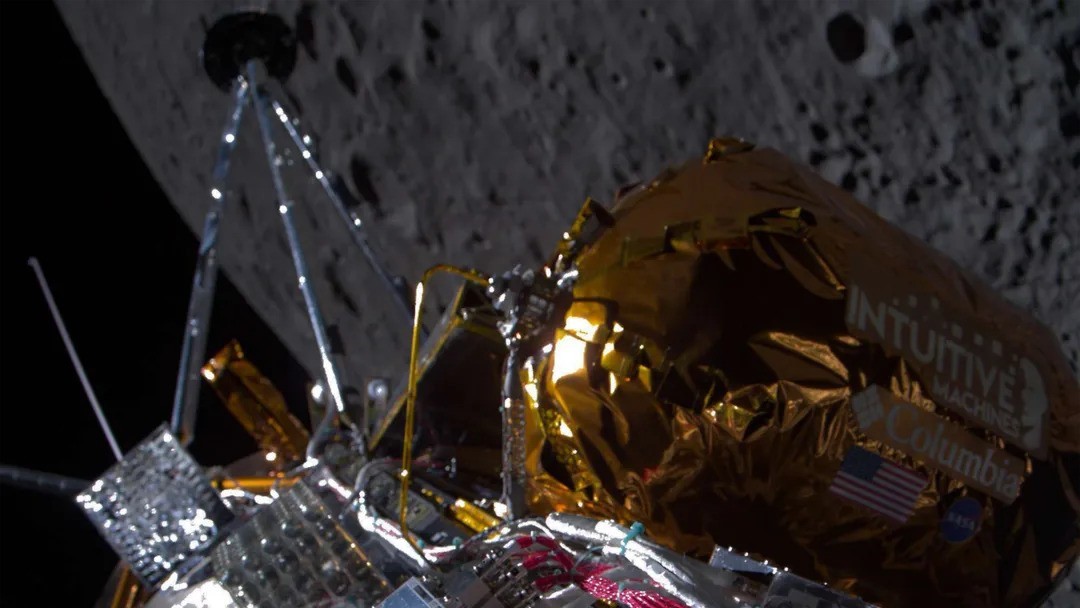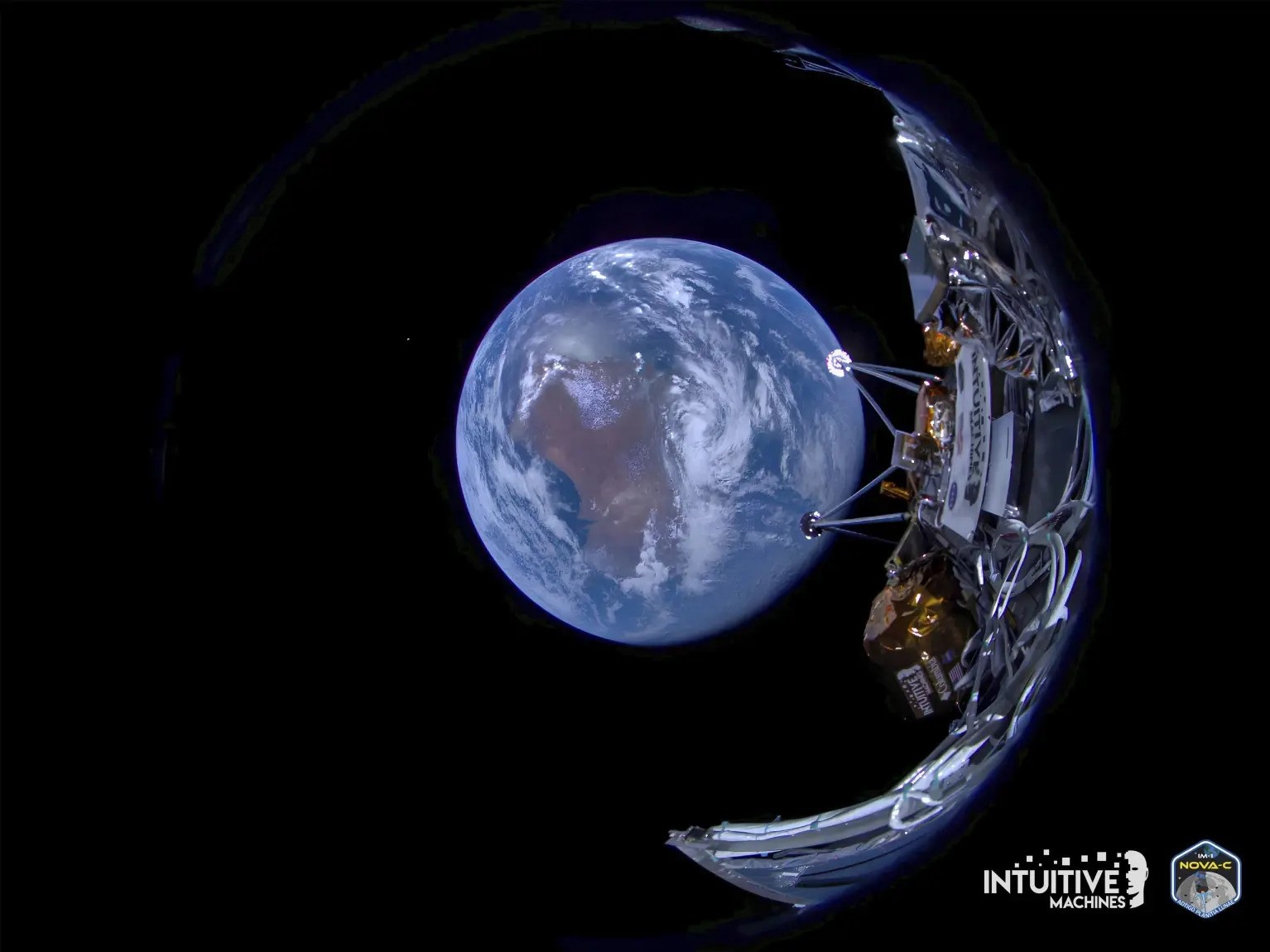'The US has returned to the moon': Private company makes historic moon landing with Odysseus probe
Intuitive Machines successfully landed its spacecraft on the moon's south pole in a historic mission that puts the U.S. back on lunar soil for the first time in over 50 years.

The first private spacecraft to ever land successfully on the moon touched down safely last night (Feb. 22).
The Odysseus lander, built by Houston-based company Intuitive Machines, arrived near the lunar south pole at 6:23 p.m. ET. It is the first U.S. lander to park on the moon since Apollo 17 in 1972.
And true to its namesake, Odysseus' journey was fraught with trials: In particular, a malfunction in the spacecraft's landing lasers sent mission engineers scrambling.
Without these lasers, the spacecraft temporarily lacked guidance for estimating landing distances, but after some tense moments, the engineers remotely uploaded a software patch for a NASA backup laser that was also on board.
Further nail-biting minutes followed as engineers worked to establish that the craft had safely landed. Finally, the team detected a faint signal from the moon's surface.
"Houston, Odysseus has found its new home," Tim Crain, the chief technology officer of Intuitive Machines, said as the control room erupted with cheers.
"The U.S. has returned to the Moon," NASA administrator Bill Nelson said in a statement posted on X, formerly known as Twitter.
Sign up for the Live Science daily newsletter now
Get the world’s most fascinating discoveries delivered straight to your inbox.
Related: Intuitive Machines moon lander beams home stunning photos of Earth from space
The Odysseus mission is part of NASA's Commercial Lunar Payload Services program, which the space agency established to incentivize the development of private-sector lunar landers. "Today is a day that shows the power and promise of NASA's commercial partnerships," Nelson said.

NASA intends to contract these companies to transport cargo and scientific equipment to the moon. "These instruments will prepare us for future human exploration of the Moon under Artemis," the space agency wrote on X.
Launched atop a SpaceX Falcon 9 rocket from Cape Canaveral, Florida on Feb. 15, Odysseus entered lunar orbit on Feb. 21. It completed one tight loop over the lunar surface before slowing for landing with a few precisely timed engine bursts.
The spacecraft landed close to the Malapert A crater in the lunar south pole. The region has long tantalized scientists with the presence of water ice, which could one day be a source for rocket fuel.
NASA sent six payloads on board Odysseus, including a set of cameras designed to study the behavior of moon dust. The cameras are expected to start operating a few hours after landing and will run until lunar night (the fourteen days of darkness when its side of the moon is faced away from the sun) falls in about a week's time.
Odysseus is the second ship to ever land on the moon's south pole and may become the first to take measurements of the conditions there. The first was India's Chandrayaan-3, which touched down successfully in August 2023 but died not long after its arrival.
Sending scientific tech to the moon is far from easy: Five of the last nine moon landing attempts have ended in failure, including last month's Peregrine mission from the Pittsburgh-based company Astrobotic Technology. This lunar lander became stranded in space after an oxidizer leak before crashing back to Earth.
Even somewhat successful landings have had their hitches: Japan's SLIM lander made a record-breakingly precise landing on the moon last month, but it touched down the wrong way up.

Ben Turner is a U.K. based staff writer at Live Science. He covers physics and astronomy, among other topics like tech and climate change. He graduated from University College London with a degree in particle physics before training as a journalist. When he's not writing, Ben enjoys reading literature, playing the guitar and embarrassing himself with chess.










